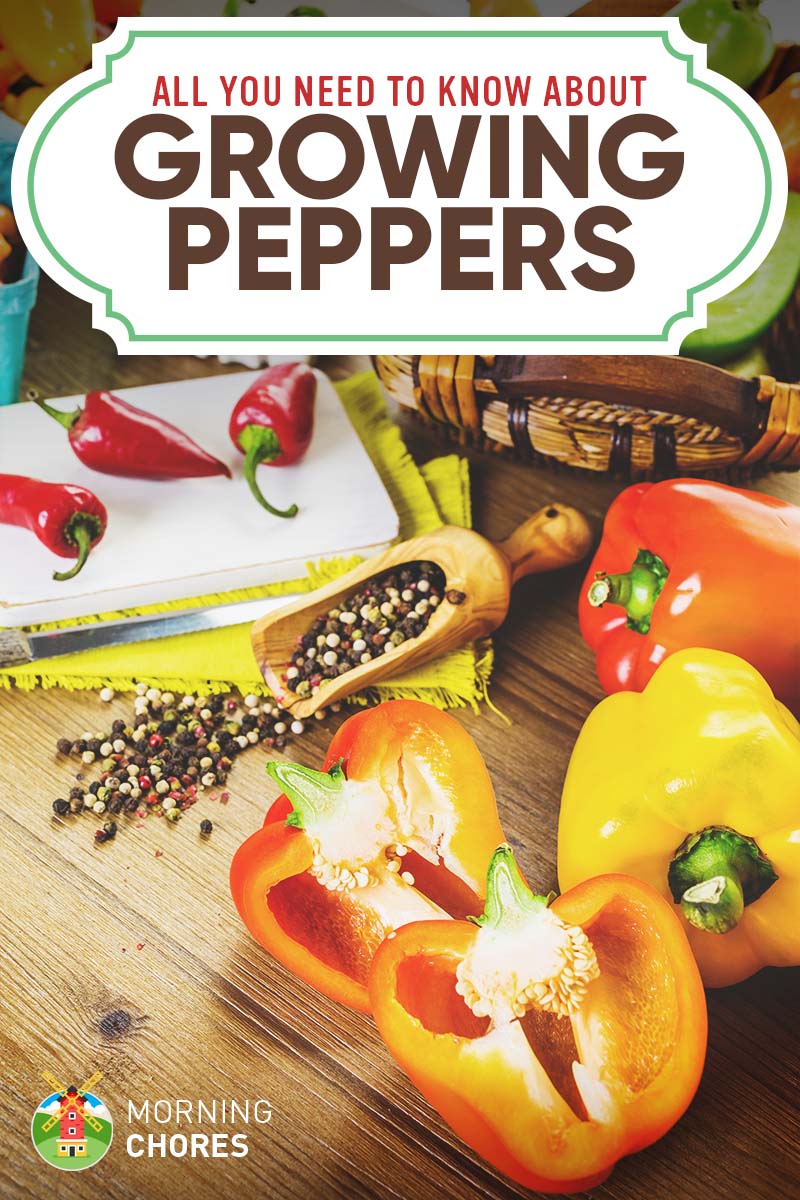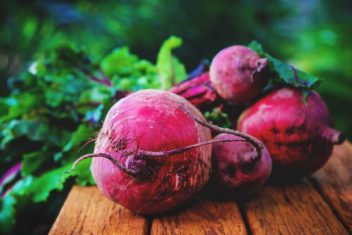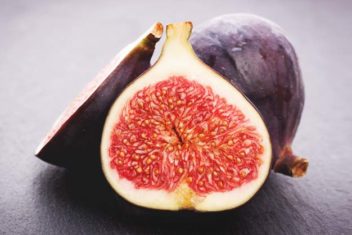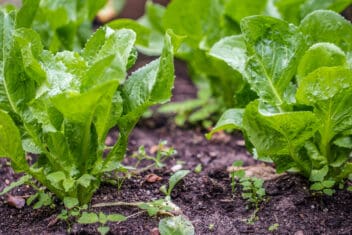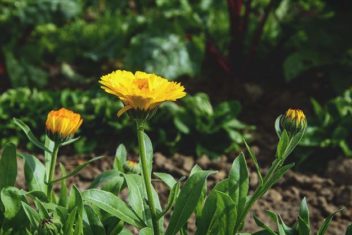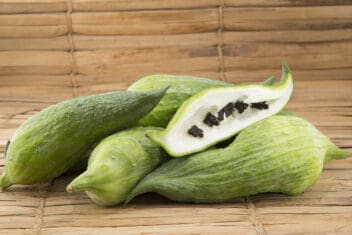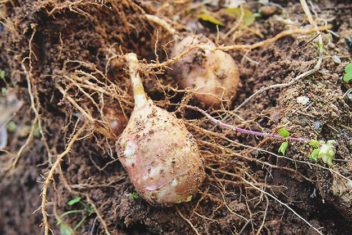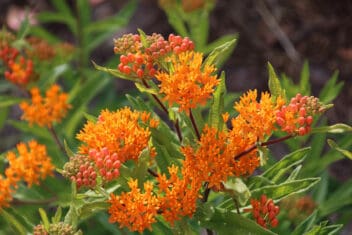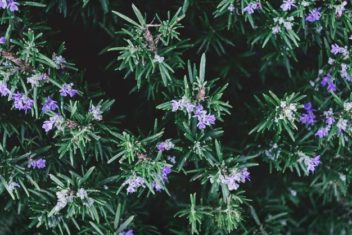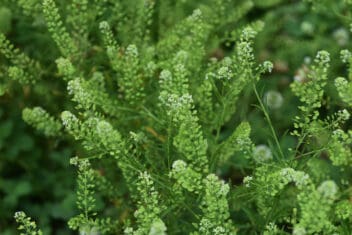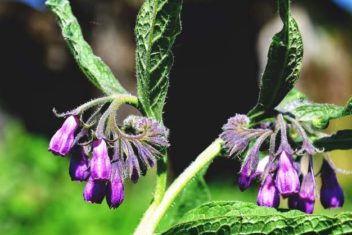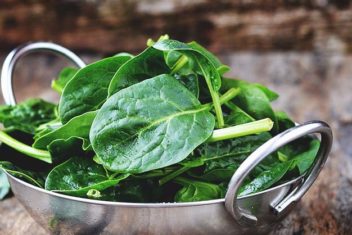Looking to add some color to your veggie garden? Sweet peppers combine a wonderful crunch with a delicious, grassy sweetness – all wrapped in a bright yellow, red, orange, green, or even white or purple package.
Peppers come in sweet, hot and spicy varieties. For this article, we will focus on sweet peppers. Sweet peppers are the ones that don’t contain capsaicin, which is what gives hot peppers their pungency and heat.
Best Varieties of Sweet Peppers
California Wonder
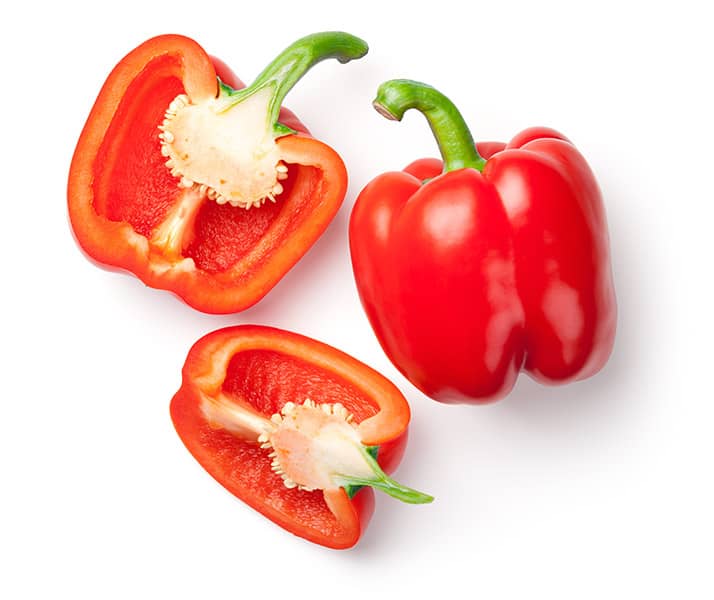
This one is the traditional classic sweet pepper that turns bright red when mature. They are in a family called bullnose or bell peppers. California Wonder has been around since 1928 because it’s just a good solid producer that’s always reliable.
It grows to a large size with thick walls, which makes it great for stuffing. There is also a Golden California Wonder that is yellow.
Corno di Toro
This may be my favorite – it’s so hard to choose. Corno di Toro is the classic Italian frying pepper. They’re a staple in my house in part because I love making quick and easy stir fry.
These sweet peppers are in a category called “bull’s horn” which means they have an elongated somewhat chunky shape. The shape makes them easier to chop or slice. They come in red or yellow colors and take 80 days to reach maturity.
Jimmy Nardello
Another heirloom favorite, this is the classic drying pepper. It’s a long, skinny sweet pepper that is named on “The Ark of Taste” by the Slow Food organization.
They’re especially good fried and for drying. Turns a dark maroon color.
Lilac
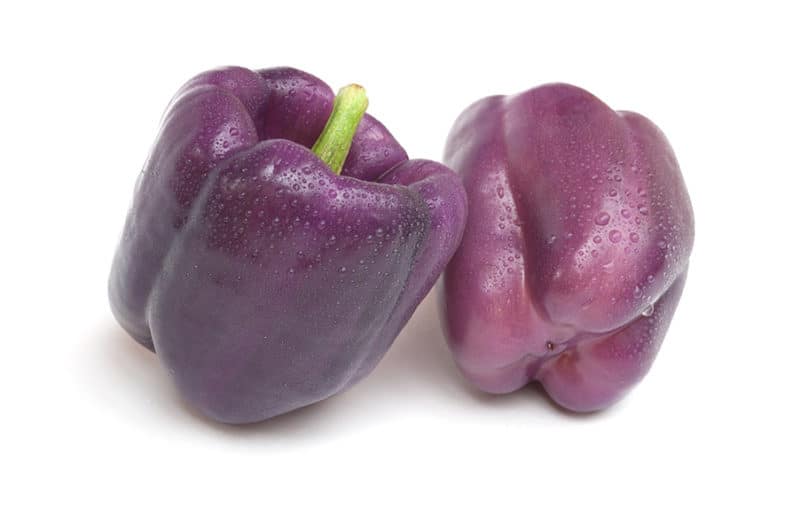
Want something totally different? Try growing purple peppers. Lilacs are a traditional bullnose pepper with a fabulous, sweet flavor. Not as big as Californa Wonder, they’re also great for stuffing. I like to use them in fresh salsa and salads because they make the dish look pretty with their unique color.
Lunchbox Pepper Mix
This is a great mix of small sweet peppers that make fun snacks for kids and grown-ups. It’s one of my favorites and has sold well for me at the market. They’re a mix of seeds from red, yellow, and orange plants. The flavor is sweet and juicy. They have a great yield and produce an abundance of fruit. It takes 75 days to maturity for colored fruits.
Goddess
Goddess is in the Sweet Banana category. Banana peppers are a bit longer and narrower than the bull’s horns varieties. Goddess peppers start out yellow and mature to red.
Goddess is prolific and has a sweet, mild flavor. It has good resistance to bacterial leaf spot. They take 63 days to mature yellow and 85 days to become the red color.
Planting Peppers
Growing Zones
Sweet peppers grow best in zones 3-8.
Sun Requirements
Peppers love heat. The best way to keep peppers happy is to make sure they get as much sunlight as possible. They need a minimum of 6-8 hours.
Soil Requirements
Peppers need well-drained, rich soils to do well. They need a pH of around 6.5. Be sure to plant with plenty of compost and fertilizer.
Make sure to get a soil test done. Peppers need phosphorus and calcium for the best results. If your soil is deficient, add bone meal and rock phosphate to your soil or compost.
Planting Seeds
Sweet peppers have a long growing season, so it’s best to start them indoors. Sow seeds about six to eight weeks before your last expected frost. In zone 6b, I start mine in mid-March.
Start seeds indoors 28 to 35 days before the last frost date. Start them indoors in the fall 115 to 148 days before the first frost date.
Peppers need warm soil for good germination. Temperatures between 80-90°F are best. To get this temperature, it’s best to use a grow mat or heating pad under the flat.
Cooler temperatures have slower germination rates, but in my experience, they generally do well at about 70°F. Seedlings emerge in 10-21 days.
Transplanting
Transplant them outside after frosts have ended and the soil has warmed. Daytime temps should be between 60-80°F and nighttime temperatures should be above 55°F.
If you’re transplanting your seedlings and not purchased plants, make sure to give peppers a week period of hardening off. They need time to adjust to the outside temperature and reduce transplant shock.
You can get a jump on the season by using row covers and hoops with garden fabric. Make sure to vent the fabric on warm sunny days and remove when the plants start flowering.
Spacing
Space plants 12-18 inches apart in rows two to three feet wide. For square foot gardening, plant one per square.
Containers
Peppers do well in raised beds and containers. The advantage to them is that you can easily enrich the soil to meet the plant’s nutrition needs.
For containers, make sure they’re at least 12 inches wide and 18 inches deep per plant. Peppers have abundant roots.
Caring for Peppers
Fertilizing
Then you’ll need to fertilize the plants every few weeks. You’ll want to mulch around the base of the plant. This will keep the soil moist and also protect the stem of the plant from any potential diseases in the soil.
However, you don’t want to over-fertilize peppers because an overabundance of nitrogen causes excess foliage and less fruit production.
Use a good organic fertilizer such as fish emulsion at transplant, and during flowering and fruiting.
Watering
Peppers are a thirsty plant and require one to two inches of water per week. However, overhead water can spread diseases. Using drip tape or water directly at the roots.
Peppers like to be evenly moist. In addition, they need temperatures between 70-90°F to set fruit.
Staking
The taller varieties or the ones with large fruits such as California Wonder may need to be staked. You can tie them to stakes with soft fabric or use “tomato” cages. I often use a trellising system.
Common Problems and Solutions for Growing Pepper Plants
Peppers – like their brethren the tomato – are prone to several pests and diseases. These are all manageable, you just need to keep your eyes open and be prepared to act.
Here are the diseases and bugs you need to be on the lookout for:
Cutworms
These little creatures go after baby pepper plants. You will walk into your garden and see a once healthy plant lopped over on its side with its stem cut. It may appear that someone has come into your garden and cut your plants stem with scissors.
Cutworms typically cut off a young plant at the base but some species will crawl up the plant. Peppers are particularly susceptible to them.
Control cutworms by putting a paper or cardboard tube around the plants. Toilet paper roles work well. If they’re causing damage you can also use Bacillus thuringiensis.
Aphids

Aphids are little pests that gather at the bottom of your pepper plants. They cause discoloration on the leaves and secrete a sticky substance known as honeydew, which can attract mold and fungus.
You can deter these pests by introducing ladybugs into your garden. You will also want to avoid bring plants such as fennel, mint, or even dandelions around your pepper plants as they attract aphids.
Instead, plant items like mums, cosmos, and zinnias in your garden to deter aphids. You can also use neem oil to control them.
Flea Beetles
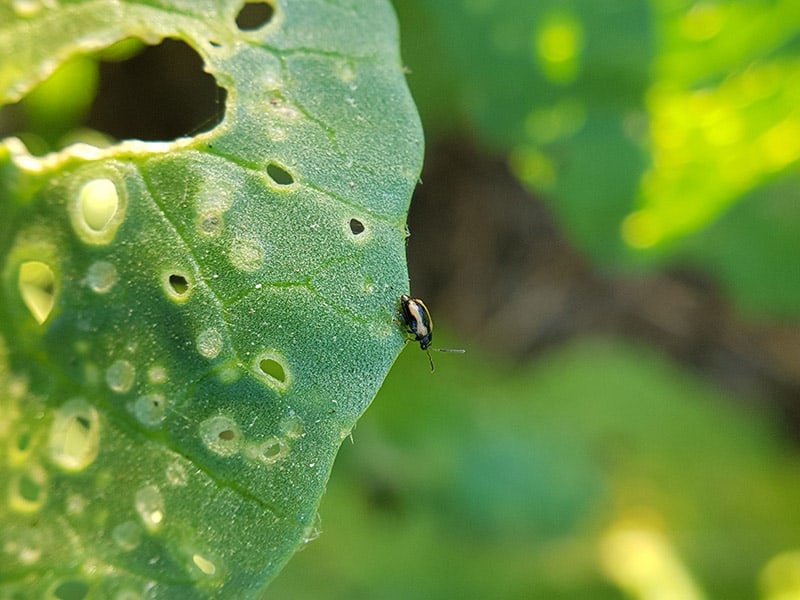
UHG. This is my nemesis and I have an issue with them on peppers and eggplants. Flea beetles can hop and move throughout the garden. They chew on the leaves of young plants making them look like they were blasted with buckshot.
Transplant out under garden fabric and use a thick layer of mulch to help keep them off young plants. Once the plants get established, they’re less susceptible.
Sticky traps help to catch them and you can plant radishes as a trap crop. For extreme infestations, you can kill flea beetles with pyrethrin.
Mulch the bed heavily, you can use your household vacuum to suck them off your pepper plants. Weed your garden thoroughly, and clean up your garden at the end of the growing season. Finally, be sure to rotate your crops.
Hornworms
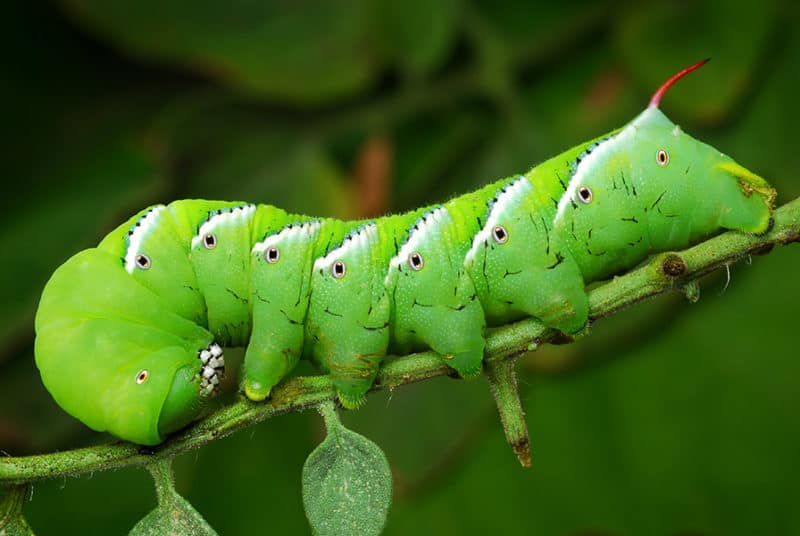
These massive caterpillars go after the leaves on tomato, tobacco, and pepper plants. The upside to having these pests is that you can see them easily.
Handpick hornworms to remove them from your plants, or you can introduce other bugs like ladybugs or parasitic wasps.
White Flies
These bugs are dangerous to your pepper crop because they not only feed on your plants, causing discoloration or even death, but they also carry plant viruses that can kill your plants.
Introducing bugs that feed on these flies is the best way to eradicate them from your garden. Ladybugs, pirate bugs, green lacewings, and big-eyed bugs will help to remove whiteflies from your pepper plants.
Southern Blight
Blight happens in really moist climates. It causes the stem and other parts of the plant to become discolored and to ultimately rot.
It’s hard to prevent southern blight. All you can do is try to isolate new types of plants in your garden by growing them in separate beds. Also, you can opt to destroy any diseased plants.
Powdery Mildew
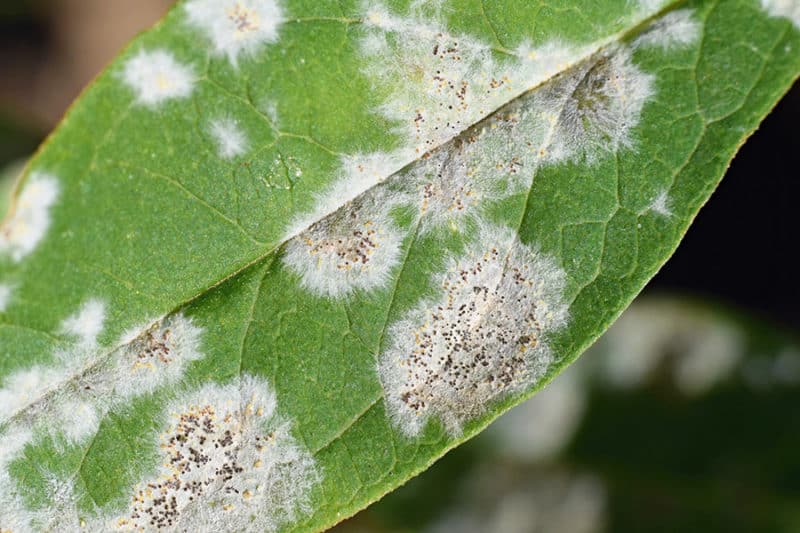
This is another fungal disease that makes it look like someone sprinkled baby powder on the leaves of your plants. Leaves often curl and drop off. Use an organic fungicide such as Actinovate or neem oil.
Plant peppers in full sun to not give the fungus a good environment to grow in. Also, you’ll water your pepper plants from below and make sure the plant has plenty of air circulation. You can also use fungicides to treat the disease.
Ripe Rot
Ripe rot is when your ripe peppers are left on the plant in a warm and humid condition. Be sure to harvest your peppers when ripe and store them properly until ready to use.
Blossom End Rot
When the bottom side of your peppers rot, you probably have blossom end rot. It happens when the plant is short on either calcium or water.
Peppers need calcium to form fruits. A lack of calcium uptake will cause dark, water-soaked spots on the end of the fruits.
Good soil management helps. Use plenty of compost, plant in warm soil, and make sure soil is well-draining to help establish healthy plants. Prevent blossom end rot with added soil calcium and regular watering.
You can add a tablespoon of powdered milk at the base of each plant when planting it to introduce extra calcium.
Sunscald
Sunscald occurs when your pepper plants get too much sunlight. The peppers will become dry and discolored. If this happens, then your plants are getting more than 8 hours of sunlight.
Move the container your peppers are planted in to a shadier spot or use shade cloth to provide cover for your plant.
Bacterial Leaf Spot
This is a bacterial infection. You’ll know you have it when your plants leaves become spotty and discolored. Ultimately the spots will enlarge and cause the leaves to droop.
Once you see the signs of the bacterial leaf spot it is too late. The only precautionary steps you can take is to rotate plants so that they aren’t planted in the same location for at least 5 years.
Mosaic
This is a virus that will cause your pepper plants to be discolored. Be sure to rotate your crops and keep the plants free of debris. Also, try to plant pepper varieties that are disease resistant.
Phytophthora
This fungal disease affects the stem at the base of the plants where it meets the soil. It girdles the plant causing lesions on the stem and wilted leaves. Fruits may turn black.
It’s more likely to occur in wet summers. Crop rotation is an important preventative step. Raised beds help with drainage.
Best and Worst Companion for Peppers
Planting certain items together can produce great benefits for both plants and ultimately give you a better crop. These are the best companion plants for peppers:
- Basil
- Chives
- Carrots
- Onions
- Chard
- Lettuce
- Spinach
- Okra
- Leeks
- Radishes
- Beets
- Corn
- Beans
- Tomatoes
- Asparagus
- Garlic
- Squash
- Oregano
- Dill
- Parsley
- Marjoram
- Buckwheat
- Rosemary
- Cucumbers
- Eggplant
- Parsnips
- Peas
- Geraniums
- French marigolds
- Petunias
- Lovage
- Nasturtium
Basil and catnip repel many pepper pests, while chives and dill attract beneficial insects.
You can also grow heat-hardy lettuces under peppers. The peppers will provide the lettuce with shade. The lettuce will out-compete the weeds around the peppers.
Some plants should be put together because they attract the same pests or have other ill effects on one another. These are the worst companion plants for peppers:
- Fennel
- Apricot
- Walnut Trees
- Beans
- Kale
- Cabbage
- Brussel Sprouts
Don’t plant hot peppers near tomatoes because it can alter the flavor.
Harvesting and Storing Peppers
Peppers are ready to go after 60-90 days when they’ve reached their full color. Pepper plants reach maturity before they change color. Most of us harvest some of our peppers when they’re green.
I know I do because I’m in a hurry to eat them fresh. But waiting for them to reach their full color makes them sweeter with a richer flavor. In addition, they have more Vitamin C when they’re fully ripe.
Harvest peppers by cutting them off at the stem. Use a sharp pair of scissors or pruners for a nice clean cut. You can also just pluck them off the plant, but be cautious because bell peppers can be delicate. Be sure to pick all of them before the first fall frost.
After you harvest your peppers they can be stored in a refrigerator for about a week to a week and a half. After that, you must freeze or pickle them to preserve them any longer. I like to can them in pasta sauces and salsa as well as make pepper pickles.
Here is another great resource to help you with safety tips and other ways to preserve your peppers for longer periods of time.
However, you can also preserve the actual pepper plant itself. You’ll need to bring it indoors before the first frost hits and keep it in a warm area under lights. People have been known to keep the same pepper plants for years with this method.
Bell peppers can be dried in the oven or a dehydrator. I don’t recommend drying them outside unless you live in an arid climate. High humidity makes it hard to dry them.
To dry:
- To dry peppers wash, core, and remove the seeds. Cut them into one-half-inch strips.
- They need to cook first so steam for about ten minutes.
- Spread on a baking sheet and dry in the oven at 140°F or follow the directions on your dehydrator.
- When the peppers are cool, place them in airtight storage containers.
Best Pepper Recipes to Utilize Your Fresh Pepper
Have you ever stopped and thought about all of the different ways you can use peppers? Well, if not, let me fill you in.
You can grow them to make your own seasonings, they’re great substitutes for chips in nachos, you can stuff them, you can sauté them, they make great cowboy candy, or they go great raw in many dishes.
One-Pot Lazy Stuffed Peppers
I love stuffed peppers but if you’ve ever made them, the stuffing process can be rather annoying. I never seem to find peppers that want to stand up and cooperate while I’m trying to stuff them.
This recipe takes all of that struggle out of the equation. It is a one-pot meal that gives you the same great taste of stuffed peppers without all of the extra work.
Feta Stuffed Red Bell Peppers
Are you a cheese lover? If so, then you are probably going to love this recipe. It would make a tasty snack, a light lunch or dinner, or even a great appetizer.
3 Ingredient Mini Stuffed Peppers
I love goat cheese. It has an amazing and different taste. Not to mention, I raise dairy goats so I have the resources to make goat cheese very inexpensively.
So when I found out this recipe only called for mini bell peppers, goat cheese, and honey I realized I could make it for free because I produce all of those items on my property. Naturally, my ears (and taste buds) perked right up. Whether you produce all of the ingredients or not, you might want to give this recipe a try.
Bell Pepper Egg In a Hole
An egg in a hole used to be a favorite breakfast or dinner item of mine before I swore off bread. When I discovered this recipe I was delighted. If you’re wanting something healthy and tasty to replace your morning carbs, try this recipe.
Christmas in July Pepper Jam
If you love pepper jam then you might want to check out this delicious recipe. Also, they make great DIY gifts that are easy and inexpensive.
Get Growing Some Peppers
Peppers are useful in so many different dishes and they’re easy to preserve by canning, drying or pickling.
On top of that, they’re just plain pretty. Their bright red, yellow, orange and purple colors make them a pleasure to have in the garden.
We want to hear your thoughts on the matter. What is your favorite pepper variety? What recipes based around peppers do you already enjoy? If you are experienced in growing peppers, do you have any tips for those that may be new at growing them?
